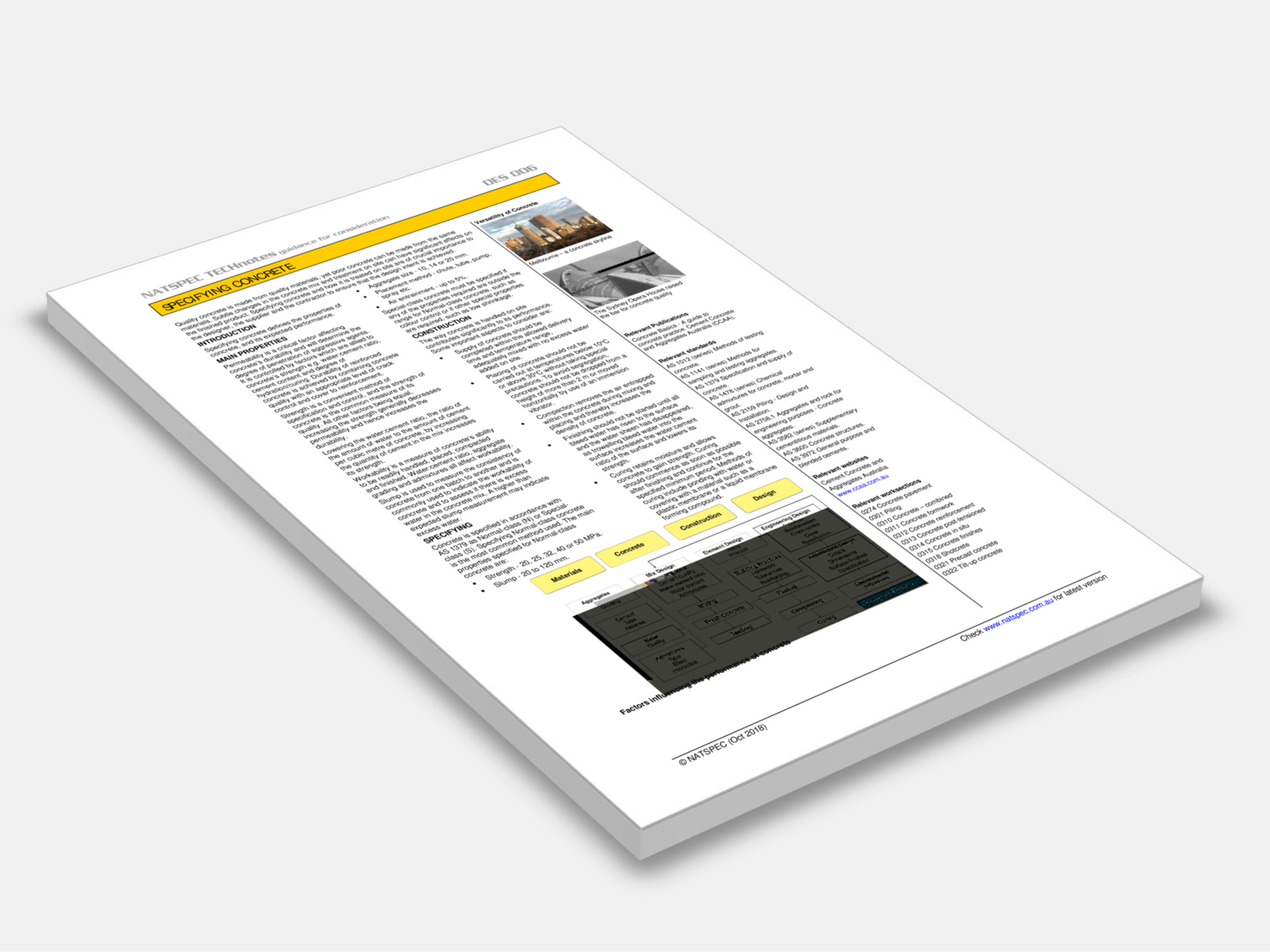
Type
Publisher
NATSPEC
Publisher
NATSPEC
Version: (Current)
Short Description
Specifying concrete defines the properties of concrete, and its expected performance.
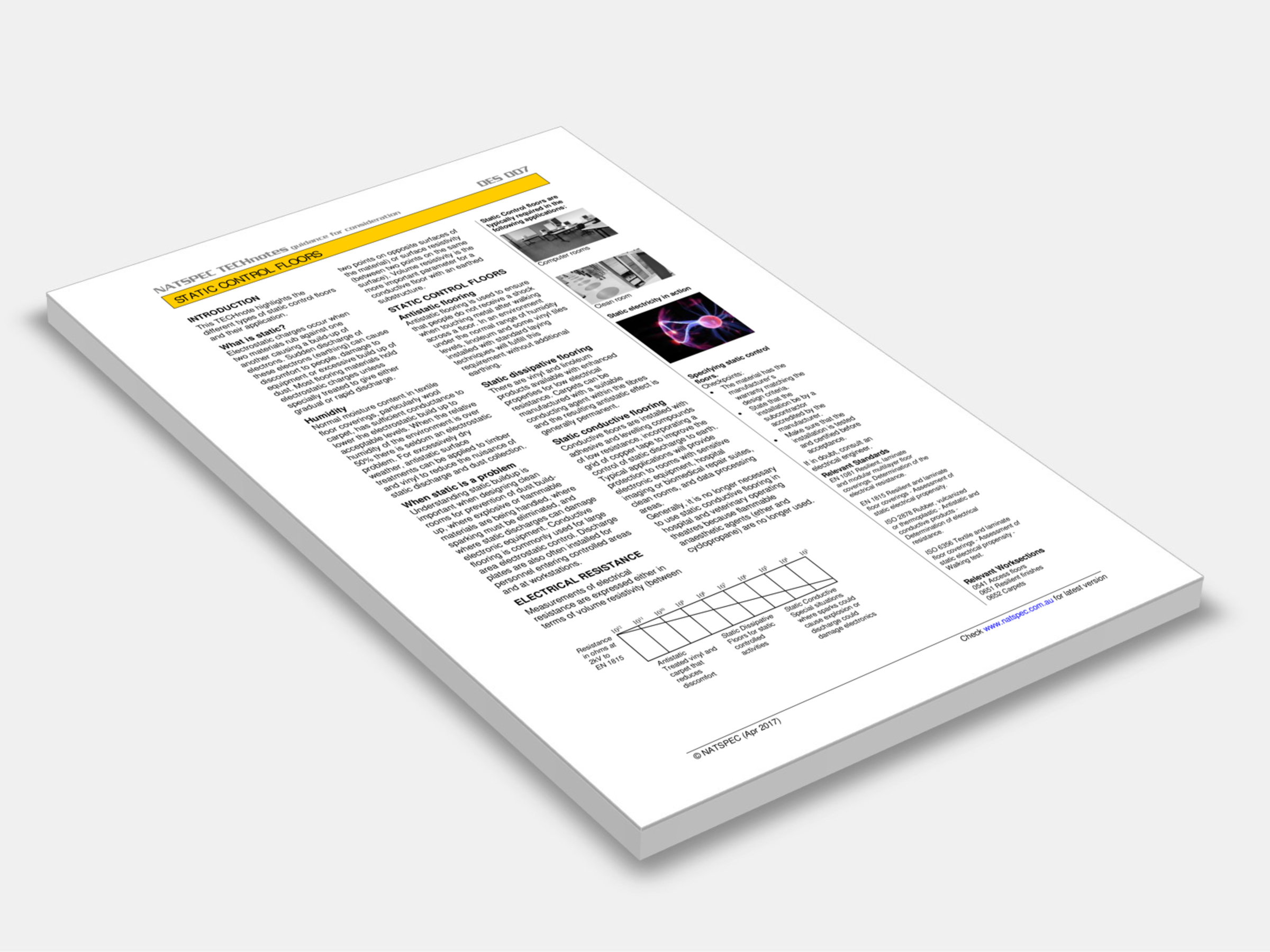
Type
Publisher
NATSPEC
Publisher
NATSPEC
Version: (Current)
Short Description
This TECHnote highlights the different types of static control floors and their application.
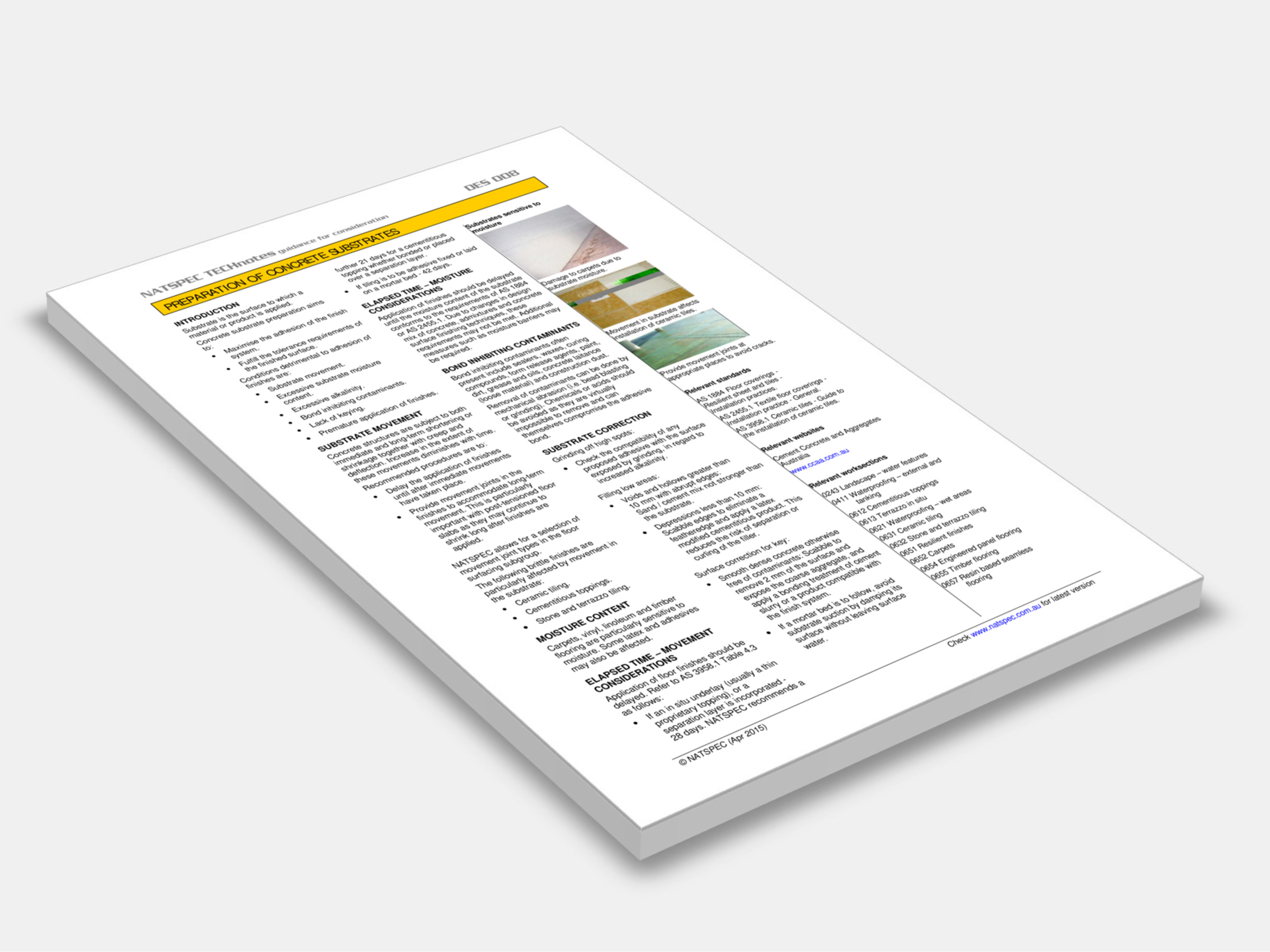
Type
Publisher
NATSPEC
Publisher
NATSPEC
Version: (Current)
Short Description
Substrate is the surface to which a material or product is applied.
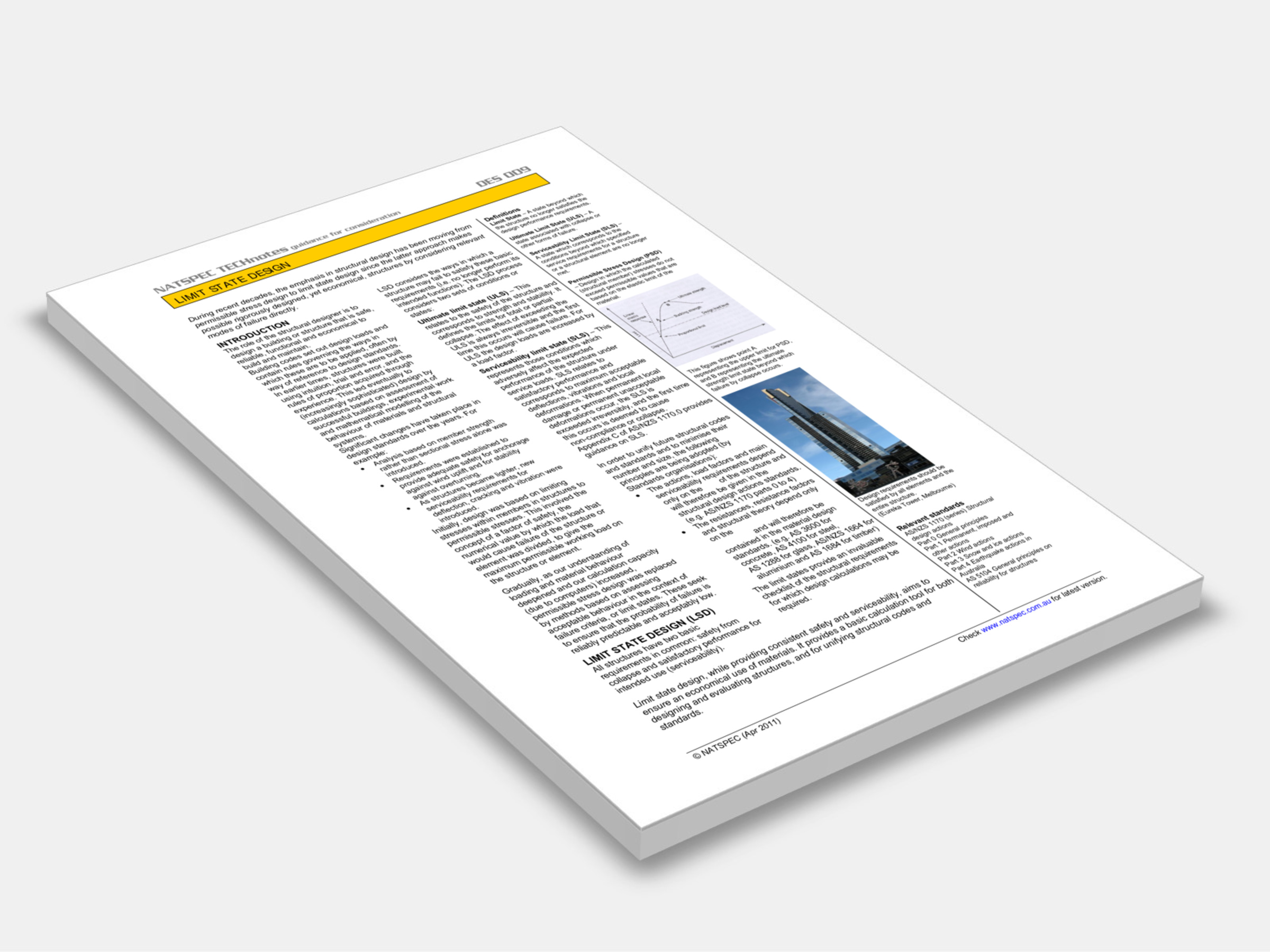
Type
Publisher
NATSPEC
Publisher
NATSPEC
Version: (Current)
Short Description
During recent decades, the emphasis in structural design has been moving from permissible stress design to limit state design since the latter approach makes possible rigorously designed, yet economical, structures by considering relevant modes of failure directly.
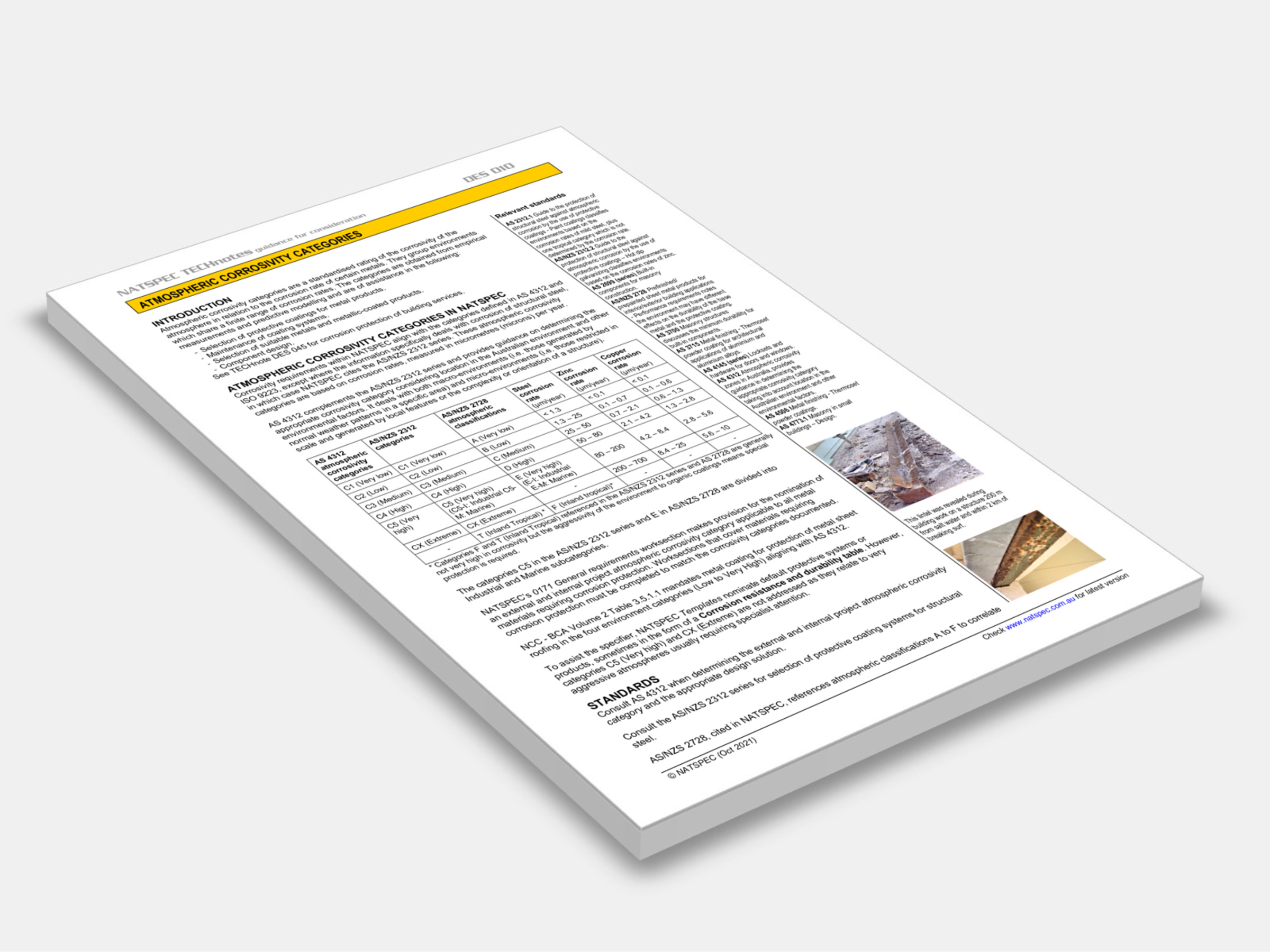
Type
Publisher
NATSPEC
Publisher
NATSPEC
Version:
2021.
(Current)
Short Description
Atmospheric corrosivity categories are a standardised rating of the corrosivity of the atmosphere in relation to the corrosion rate of certain metals.

Type
Publisher
NATSPEC
Publisher
NATSPEC
Version:
2021.
(Current)
Short Description
This TECHnote aims to provide specifiers with guidance in deciding the required protection to prevent excessive corrosion.
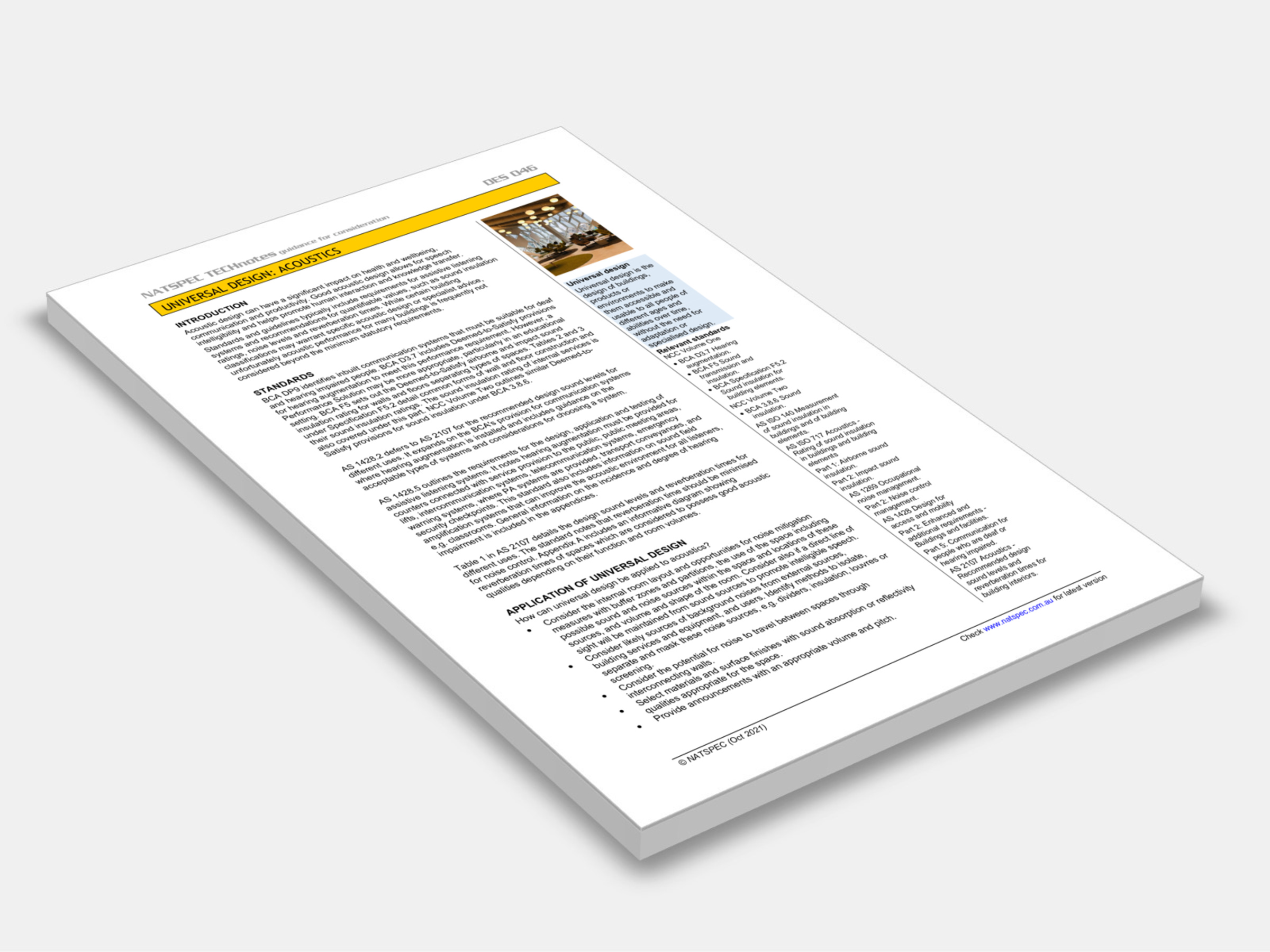
Type
Publisher
NATSPEC
Publisher
NATSPEC
Version:
2021.
(Current)
Short Description
Acoustic design can have a significant impact on health and wellbeing, communication and productivity; good acoustic design allows for speech intelligibility and helps promote human interaction and knowledge transfer.
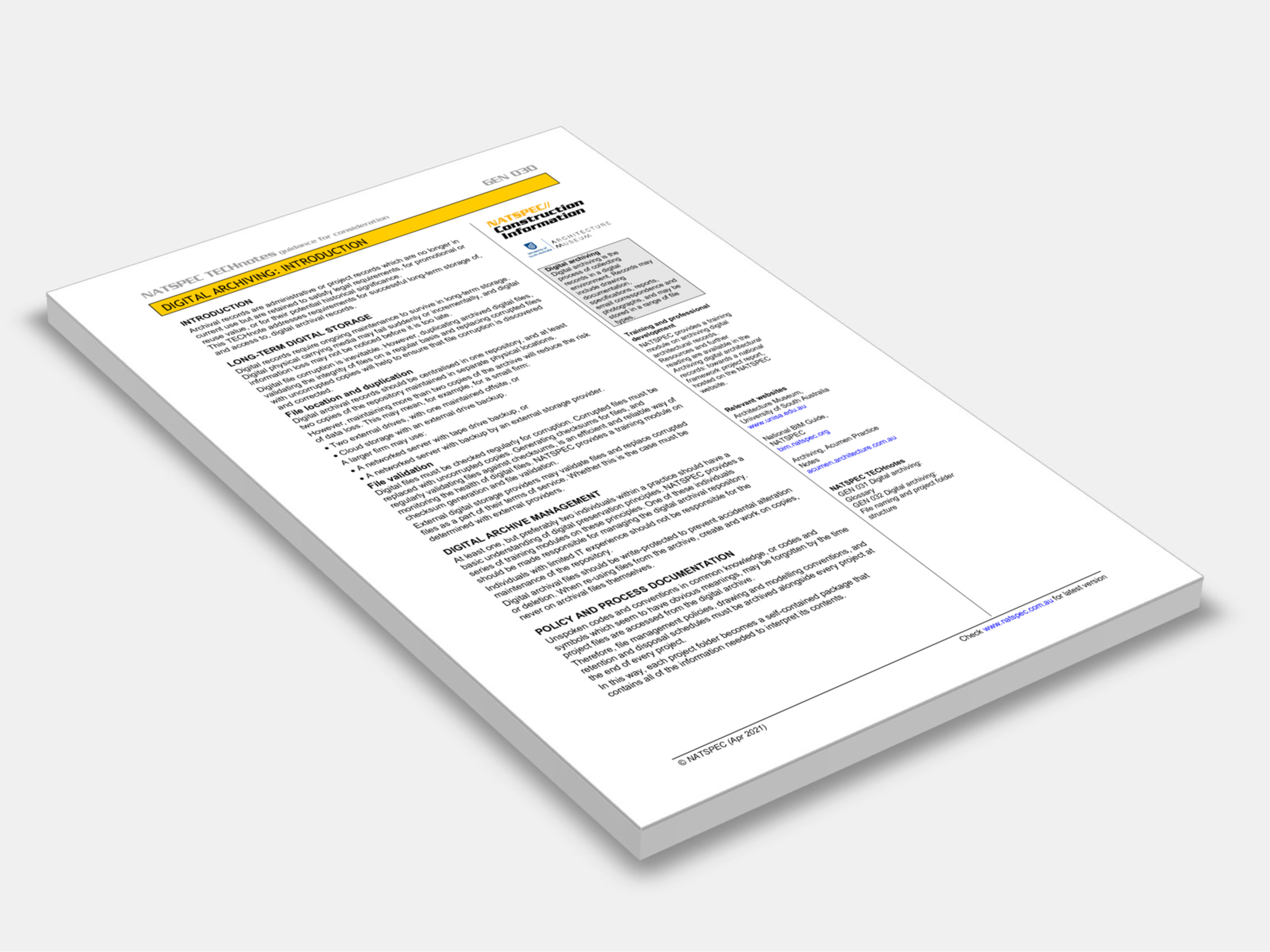
Type
Publisher
NATSPEC
Publisher
NATSPEC
Version: (Current)
Short Description
Archival records are administrative or project records which are no longer in current use but are retained to satisfy legal requirements, for promotional or reuse value, or for their potential historical significance.

Type
Publisher
NATSPEC
Publisher
NATSPEC
Version: (Current)
Short Description
Standards and relevance for slip resistance performance.
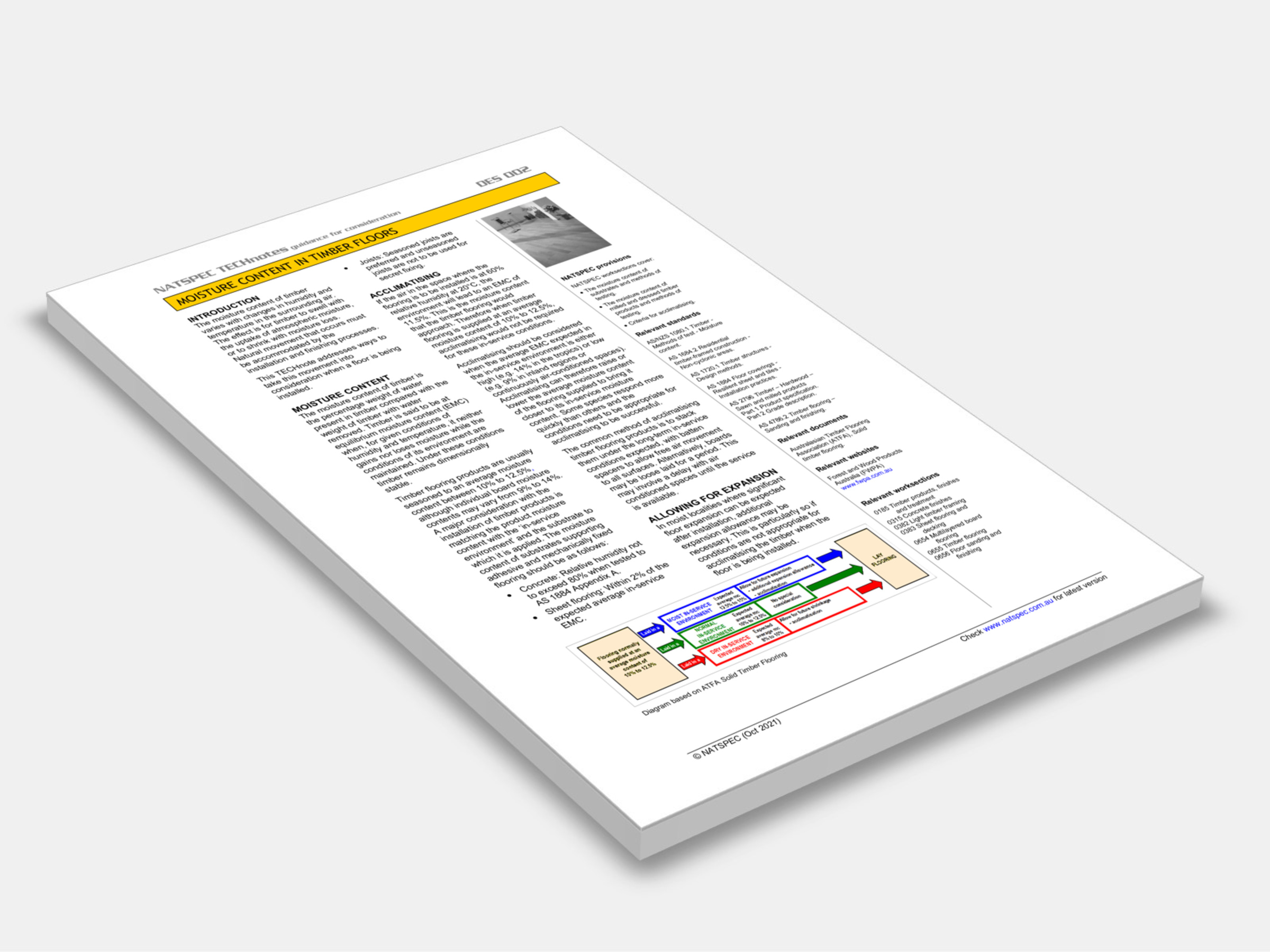
Type
Publisher
NATSPEC
Publisher
NATSPEC
Version:
2021.
(Current)
Short Description
The moisture content of timber varies with changes in humidity and temperature in the surrounding air. The effect is for timber to swell with the uptake of atmospheric moisture, or to shrink with moisture loss. Natural movement that occurs must be accommodated by the installation and finishing processes.